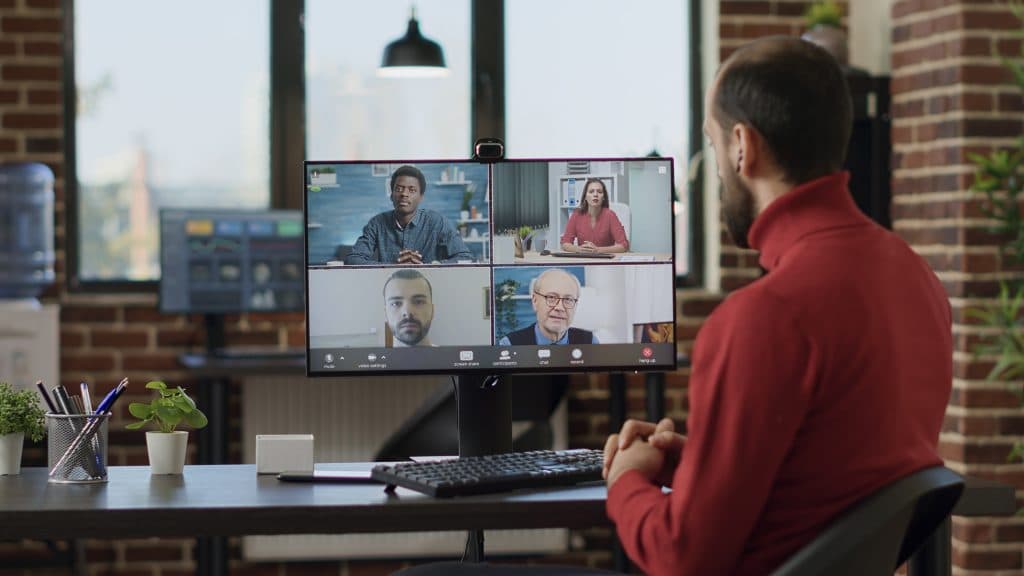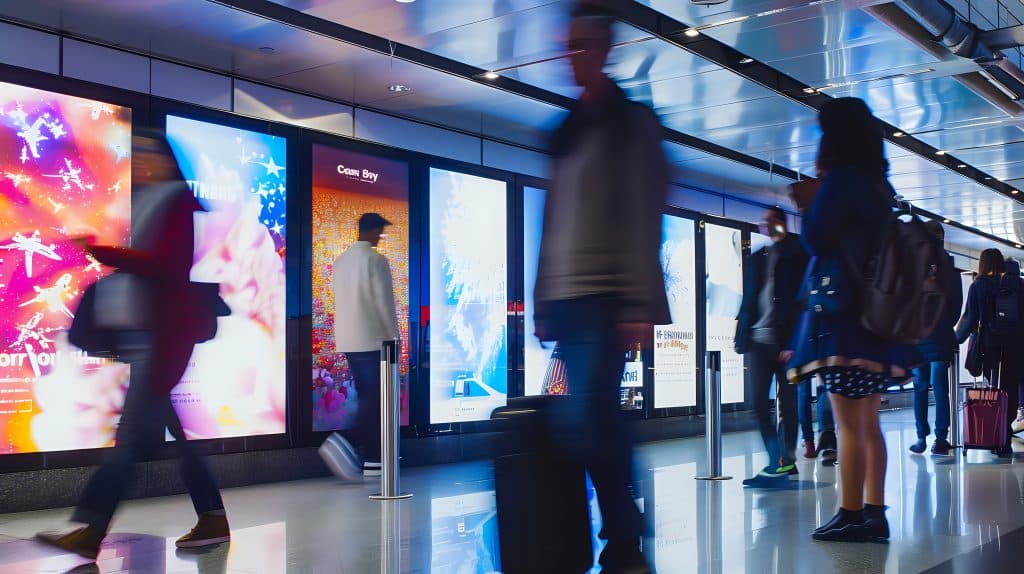5 Innovative Use Cases of Augmented Reality in Real Life
Discover 5 real-world applications of augmented reality (AR) transforming industries. Explore innovative AR use cases in various sectors
Augmented reality (AR) has rapidly become a transformative technology, offering numerous innovative applications across various sectors. By seamlessly blending digital content with the physical world, AR is revolutionizing how we interact with information and environments. In this article, we’ll dive into 5 use cases of augmented reality that showcase its diverse potential.
Augmented Reality in Retail
Augmented reality is reshaping the retail landscape, offering immersive experiences that bridge the gap between online and offline shopping. Here’s a closer look at how AR is transforming the retail industry:
Virtual Try-Ons
One of the most compelling applications of AR in retail is virtual try-ons. AR-powered try-on solutions allow customers to visualize how clothing, accessories, makeup and eyewear look on them in real-time without physically trying them on. By leveraging facial recognition and 3D rendering technologies, these solutions provide an accurate representation of fit, style and color. Consequently, this enhances the online shopping experience and reduces the need for returns.
Enhanced Product Visualization
AR enables retailers to showcase products in immersive 3D environments, providing customers with a more interactive and engaging shopping experience. Whether it’s furniture, home decor or electronic gadgets, AR visualization tools allow users to virtually place items in their living spaces, enabling them to see how products look and fit in real-world settings. By enhancing product visualization, AR helps customers make more informed purchasing decisions, ultimately reduces buyer’s remorse and increases satisfaction.
In-Store Navigation
AR-powered navigation systems are transforming the way customers navigate physical retail spaces. By overlaying digital signage, product information, and promotional offers onto the real-world environment, AR navigation apps guide shoppers seamlessly through stores. This helps them locate products, departments and amenities with ease. Additionally, these solutions can offer personalized recommendations based on user preferences and past purchases. This enhances the overall shopping experience and drives customer engagement.
Moreover, in addition to these use cases, retailers are exploring other innovative applications of AR. These include virtual showrooms, interactive product catalogs and gamified shopping experiences. As AR technology continues to evolve and become more accessible, its impact on the retail industry is poised to grow exponentially. This will usher in a new era of immersive and personalized shopping experiences.
AR in Education
Augmented reality is revolutionizing education by offering immersive and interactive learning experiences that cater to diverse learning styles. Here’s how AR is transforming the educational landscape:
Interactive Learning Experiences
AR brings textbooks and learning materials to life by overlaying interactive digital content onto physical objects. Students can engage with 3D models, animations and simulations that enhance comprehension and retention of complex concepts. For example, in biology classes, students can explore virtual organs and biological processes in detail, fostering a deeper understanding of anatomy and physiology.
Virtual Field Trips
AR facilitates virtual field trips to historical sites, museums and natural wonders, granting students immersive learning experiences outside the classroom. Using AR-powered apps, students can dive into ancient civilizations. They can observe historical events and engage with artifacts. As a result, they develop a greater appreciation for cultural heritage and historical contexts.
Anatomy and Science Education
In medical and science education, AR facilitates hands-on learning experiences that simulate real-world scenarios. Students can practice surgical procedures, conduct virtual dissections, and explore scientific phenomena in interactive virtual environments. Additionally, AR applications in anatomy education allow students to dissect virtual cadavers, identify anatomical structures, and visualize physiological processes. Consequently, this enhances their practical skills and medical knowledge.
AR also promotes collaborative learning and student engagement by enabling interactive group activities and project-based learning experiences. By fostering curiosity, creativity and critical thinking, AR empowers students to become active participants in their own learning journey and prepares them for success in an increasingly digital and interconnected world.
AR in Healthcare
Augmented reality is revolutionizing healthcare by offering innovative solutions that improve patient care, medical training and surgical outcomes. Here’s how AR is transforming the healthcare industry:
Surgical Planning and Visualization
Firstly, surgeons use AR to plan complex procedures by overlaying medical imaging data onto patients’ bodies. This enhances surgical precision and reduces risks. AR visualization tools enable surgeons to see internal structures in real-time during operations. This improves outcomes and patient safety. By providing a detailed and accurate view of patient anatomy, AR helps surgeons make informed decisions and navigate complex surgical scenarios with confidence.
Medical Training Simulations
Moreover, AR-based medical simulations provide trainees with realistic scenarios to practice diagnostic and procedural skills in a controlled environment. From surgical simulations to patient interaction scenarios, AR enhances medical training by offering hands-on experience without patient risk. Trainees can practice complex procedures, refine their techniques and develop critical decision-making skills in a safe and controlled setting. AR simulations also allow trainees to receive real-time feedback and guidance from experienced instructors, accelerating their learning curve and improving competency levels.
Rehabilitation and Therapy
Additionally, in rehabilitation and therapy, AR applications assist patients in regaining motor functions and cognitive abilities through interactive exercises and games. By providing real-time feedback and motivation, AR enhances rehabilitation outcomes and increases patient engagement. Patients can engage in customized therapy programs that target specific areas of impairment, such as mobility, coordination, and cognitive function. AR-based rehabilitation tools also track patient progress over time, allowing therapists to adjust treatment plans and optimize outcomes.
AR in Architecture and Real Estate
Virtual Property Tours
Augmented reality revolutionizes the way properties are showcased to prospective buyers and renters. Through AR-enabled virtual property tours, individuals can explore homes and commercial spaces remotely, providing an immersive and interactive experience. By leveraging AR technology, users can navigate through properties as if they were physically present. They gain a comprehensive understanding of the layout, design and features. Consequently, virtual property tours enhance the real estate search process by offering convenience and accessibility while saving time and resources for both buyers and sellers.
Interior Design Visualization
Moreover, AR plays a crucial role in visualizing interior design concepts and decorating spaces. Designers and homeowners can utilize AR applications to overlay virtual furniture, decor and finishes onto real environments. This allows them to experiment with different styles and configurations. By visualizing design elements in situ, users can assess how furniture and decor complement existing architecture and layout. This facilitates informed decision-making and minimizes design errors. Consequently, AR interior design visualization tools empower individuals to personalize their living spaces according to their preferences, enhancing design accuracy and satisfaction.
Construction Planning and Visualization
In the realm of architecture and construction, AR facilitates project planning, visualization, and collaboration. Architects and contractors can leverage AR technology to superimpose digital models and blueprints onto physical job sites. This enables them to visualize building designs in real-world contexts. AR visualization tools provide stakeholders with a shared understanding of project specifications. This allows for better communication and coordination throughout the construction process.
Moreover, AR enables real-time monitoring of construction progress, detecting errors and discrepancies early on and ensuring adherence to design intent and quality standards. By streamlining construction planning and visualization, AR enhances efficiency, accuracy and collaboration among project teams.
Augmented Reality in Manufacturing and Maintenance
Assembly and Production Processes
Augmented reality (AR) is revolutionizing manufacturing by optimizing assembly and production processes. Firstly, AR-enabled smart glasses or headsets provide real-time visual guidance and instructions to assembly line workers. therefore, it reduces errors and increasing efficiency. Workers can overlay digital information onto physical components such as assembly instructions, part numbers and safety protocols, directly within their field of view. Consequently, this AR-guided assembly approach streamlines workflows, minimizes training time for new employees and ensures consistent quality across production lines.
Quality Control and Inspection
Moreover, in addition to assembly, AR enhances quality control and inspection procedures in manufacturing facilities. AR-equipped devices enable inspectors to overlay digital inspection criteria onto physical products, facilitating real-time analysis and validation. By comparing digital models with physical components, inspectors can identify defects, deviations or anomalies more efficiently and accurately. As a result, AR-powered inspection systems streamline the quality assurance process, enabling faster feedback loops and reducing the risk of defective products reaching the market.
Equipment Maintenance and Repair
Furthermore, augmented reality plays a crucial role in equipment maintenance and repair operations. Maintenance technicians can use AR-enabled devices to access digital maintenance manuals, schematics and troubleshooting guides overlaid onto machinery and equipment. AR-assisted maintenance workflows provide technicians with step-by-step instructions, visual cues, and interactive checklists to diagnose issues and perform repairs efficiently. Additionally, remote experts can assist on-site technicians via AR-enabled communication platforms, facilitating real-time collaboration and knowledge sharing. Consequently, AR-based maintenance solutions improve equipment uptime, reduce downtime and enhance overall operational efficiency in manufacturing facilities.
Conclusion
Augmented reality continues to redefine possibilities across industries, from enhancing retail experiences to revolutionizing healthcare and education. By seamlessly blending digital content with the physical world, AR empowers organizations to drive innovation, improve efficiency, and deliver immersive experiences. As technology advances and adoption grows, we can expect to see even more creative and impactful applications of augmented reality in the future.
At 8seneca, our expertise lies in offering tailored B2B services, with a specific emphasis on IT outsourcing solutions. Should you need support with IT outsourcing, feel free to contact us without delay. Additionally, we’re actively looking for passionate interns to become part of our team. For details about available positions, please visit our recruitment center.
Verwandte Artikel

Jul 22, 2025
Read more
The Cost of Hiring the Wrong Developer (and How to Avoid It)
A bad developer hire can cost you time, money, and trust. Here's how to spot red flags early—and avoid hiring the wrong developer.

Jul 16, 2025
Read more
How to Hire Remote Developers: Your Ultimate Guide
Hire remote developers with ease. Find where to locate top remote developers and vet them right in this guide.

Jul 14, 2025
Read more
CASE STUDY: Making Digital Screens Work Together Perfectly
8Seneca fixed Android display synchronization for a retail client with a simple, effective solution. Download the full case study.

Jul 08, 2025
Read more
Python for Business: How It Saves You Money and Time
Save money & time with Python development for your business. Learn how efficient Python software helps companies grow faster.

Jun 30, 2025
Read more
Digital Transformation for Business: What You Need to Know
Mastering digital transformation for your business. Get clear steps for tech adoption, growth, and a secure future.

Jun 25, 2025
Read more
The Ultimate Guide to Hiring Remote Developers for Your Tech Team.
Learn to hire remote developers successfully. Discover benefits, overcome challenges, and find top global tech talent with 8Seneca's guide.
